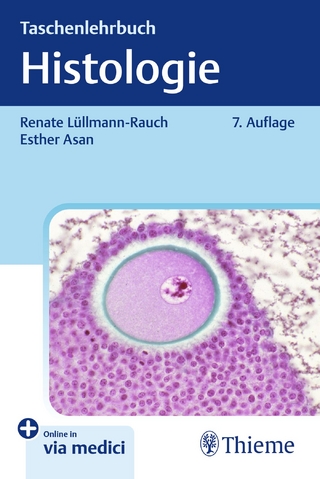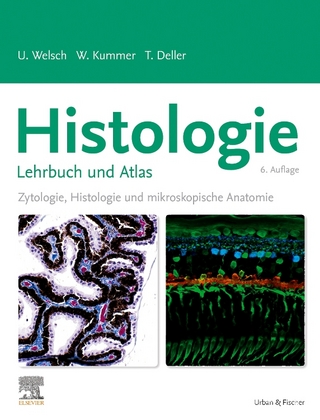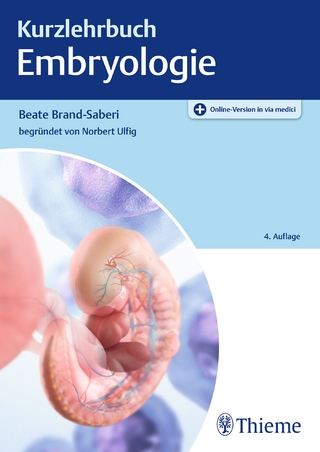
Neuroglia in C. elegans
Morgan & Claypool Publishers (Verlag)
978-1-61504-688-1 (ISBN)
The nematode C. elegans is one of the most important model organisms for understanding neurobiology. Its completely mapped neural connectome of 302 neurons and fully characterized and stereotyped development have made it a prototype for understanding nervous system structure, development, and function. Fifty-six out of C. elegans' total of 959 somatic cells are classified as neuroglia. Although research on worm glia has lagged behind studies focused on neurons, there has been a steep upswing in interest during the past decade. Information arising from the recent burst of research on worm glia supports the idea that C. elegans will continue to be an important animal model for understanding glial cell biology. Since the developmental lineage of all cells was mapped, each glial cell in C. elegans is known by a specific name and has research associated with it. We list and describe the glia of the hermaphrodite form of C. elegans and summarize research findings relating to each glial cell. We hope this lecture provides an informative overview of worm glia to accompany the excellent and freely available online resources available to the worm research community.
Randy F. Stout is an assistant professor of neuroscience in the Department of Biomedical Sciences at the New York Institute of Technology College of Osteopathic Medicine. He completed his doctoral training at the University of Alabama, Birmingham with a Ph.D. in Neurobiology after initiating his graduate training at the University of California, Riverside. His thesis research was on the glia of C. elegans in which he was an early adopter to use ""the worm"" as a model for gliobiological research and the use of optogenetic research tools to study glia. He moved to Albert Einstein College of Medicine for his postdoctoral research where he studied gap junctions of mammalian astrocytes using high-resolution microscopy to reveal striking variability in the structural characteristics of the supramolecular gap junction plaques that act as very prominent cellular routes for communication between neuroglia. His current research includes: (i) The molecular rules governing formation and degradation of heterotypic gap junctions connecting astrocytes to oligodendrocytes; (ii) the cellular/molecular basis for the requirement of astrocyte-oligodendrocyte gap junctions for normal myelin; and (iii) he is developing new experimental tools to manipulate gap junction structure and function in vivo. He also enjoys teaching in areas including cell biology and neuroscience. He has taken on graphic design and animation as a hobby in order to better explain how biology works across a wide range of size-scales during his discussions with students and colleagues. He enjoys developing three-dimensional computer animations to explain dynamic processes such as the formation of gap junction connections between cells and to present neuroanatomy using technologically-enhanced media forms. He is a member of several national and international societies including the New York Academy of Sciences, the Society for Neuroscience, the Genetics Society of America, the American Society for Cell Biology, the International Society for Neurochemistry, the American Society for Biochemistry and Molecular Biology, and the American Society for Neurochemistry. Navin Pokala, PhD, is an assistant professor of Biology in the Department of Life Sciences at the New York Institute of Technology. He performed his doctoral work at the University of California, Berkeley, earning a Ph.D. in Biochemistry and Molecular Biology. His thesis research was on computational protein design. He moved to The Rockefeller University for his postdoctoral research, where he developed chemical-genetic methods for perturbing C. elegans neural activity, and computational methods for automatically tracking their behaviors. His current research is focused on using C. elegans as a testing ground for the development of experimental and computational strategies for network neuroscience. Professor Alexei Verkhratsky, MD, PhD, D.Sc., Member of Academia Europaea, Member of the German National Academy of Sciences Leopoldina, Member of Real Academia Nacional de Farmacia (Spain), was born in 1961 in Stanislaw, Galicia, Western Ukraine. He graduated from Kiev Medical Institute in 1983, and received his PhD (1986) and D.Sc. (1993) in Physiology from Bogomoletz Institute of Physiology, Kiev, Ukraine. He joined the Division of Neuroscience, School of Biological Sciences in Manchester in September 1999, became a Professor of Neurophysiology in 2002, and served as Head of the Division from 2002 to 2004. From 2007 to 2010 he was appointed as visiting professor/Head of Department of Cellular and Molecular Neurophysiology at the Institute of Experimental Medicine, Academy of Sciences of Czech Republic. In 2010 A. Verkhratsky was appointed as a Research Professor of Ikerbasque (the Basque Research Council), in 2011 as an Honorary Visiting Professor at Kyushu University, Fukuoka, Japan and since 2012 has acted as Adjunct Scientific Director of the Achucarro Basque Centre for Neuroscience (Bilbao, Spain). Prof. A. Verkhratsky is a co-editor-in-chief of Cell Calcium (2000), and Membrane Transport & Signalling - Wiley Interdisciplinary Reviews (2009), Receiving Editor of Cell Death & Disease (2009), and a member of editorial boards of numerous scientific journals. Prof. Alexei Verkhratsky is an internationally recognised scholar in the field of cellular neurophysiology. His research is concentrated on the mechanisms of inter- and intracellular signalling in the CNS, being especially focused on two main types of neural cells, neurones and neuroglia. He made important contributions to understanding the chemical and electrical transmission in reciprocal neuronal-glial communications and on the role of intracellular Ca2+ signals in the integrative processes in the nervous system. Many of A. Verkhratsky's studies are dedicated to investigations of cellular mechanisms of neurodegeneration. In recent years he studies the glial pathology in Alzheimer disease. He authored a pioneering hypothesis of astroglial atrophy as a mechanism of neurodegeneration. Vladimir Parpura, M.D., Ph.D., holds both a medical degree, awarded from the University of Zagreb in Croatia in 1989, and a doctorate in Neuroscience and Zoology from Iowa State University in 1993. He has held faculty appointments at the Department of Zoology and Genetics, Iowa State University, and the Department of Cell Biology and Neuroscience, University of California Riverside. He is presently a tenured Associate Professor in the Department of Neurobiology, University of Alabama Birmingham, as well as a tenured Full Professor in the Department of Biotechnology, University of Rijeka, Croatia. He was elected as a Member of Academia Europaea (MEA) in 2012. His current research includes: i) studying the modulation of calcium-dependent glutamate release from astrocytes in health and disease; ii) visualization of vesicular/receptor trafficking; iii) examination of the nature and energetics of interactions between exocytotic proteins using single molecule detection approaches; iv) development of scaffolds and dispersible materials, most notably modified carbon nanotubes, which can be used in repair after brain injury and v) bio-mimetic micro-robotics. He has been interfacing neuroscience with nanoscience/nanotechnology, synthetic biology and biomedical engineering.
1. Introduction
2. A Primer on C. elegans
3. A Primer on the Worm Nervous System
4. History of Glia in Nematode Research
5. C. elegans Glia—General Description
6. Descriptions and Summary of Research for Each of the Worm Glia
7. Summary and Final Comments
References
Author Biography
| Erscheinungsdatum | 20.03.2018 |
|---|---|
| Reihe/Serie | Colloquium Series on Neuroglia in Biology and Medicine: From Physiology to Disease |
| Mitarbeit |
Herausgeber (Serie): Alexei Verkhratsky, Vladimir Parpura |
| Verlagsort | San Rafael |
| Sprache | englisch |
| Maße | 152 x 229 mm |
| Gewicht | 525 g |
| Themenwelt | Studium ► 1. Studienabschnitt (Vorklinik) ► Histologie / Embryologie |
| Naturwissenschaften ► Biologie ► Allgemeines / Lexika | |
| Naturwissenschaften ► Biologie ► Humanbiologie | |
| Naturwissenschaften ► Biologie ► Zellbiologie | |
| Naturwissenschaften ► Biologie ► Zoologie | |
| ISBN-10 | 1-61504-688-7 / 1615046887 |
| ISBN-13 | 978-1-61504-688-1 / 9781615046881 |
| Zustand | Neuware |
| Informationen gemäß Produktsicherheitsverordnung (GPSR) | |
| Haben Sie eine Frage zum Produkt? |
aus dem Bereich


